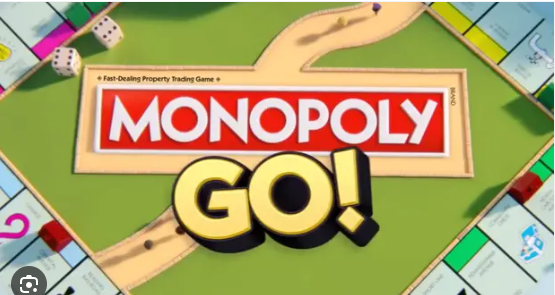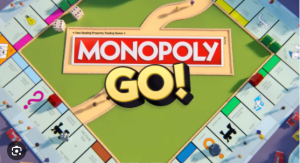Monopoly is a classic board game that has entertained families and friends for decades. Its timeless appeal lies in its mix of strategy, negotiation, and luck. To master this game, it’s essential to understand the rules, strategies, and subtle nuances that can turn the tide in your favor.
1. Introduction to Monopoly
Monopoly is played on a square board consisting of 40 spaces representing properties, railroads, utilities, and special spaces like Chance and Community Chest. Each player selects a token and starts with a set amount of money. The goal is simple: bankrupt your opponents by acquiring properties and charging rent.
2. Setting Up the Game
To start, place the board on a flat surface and shuffle the Chance and Community Chest cards. Each player chooses a token (such as a car, hat, or dog) and receives $1500 in Monopoly money: two $500s, four $100s, one $50, one $20, two $10s, one $5, and five $1s. Determine a banker to manage the bank’s assets and property transactions.
3. Understanding the Basics
Players take turns rolling two six-sided dice to move around the board. Landing on properties allows players to buy them, pay rent, or take action as directed by Chance or Community Chest cards. Properties must be developed by building houses and hotels to increase rent fees.
4. Acquiring Properties
Buying properties is crucial for success. When a player lands on an unowned property, they have the option to buy it. If they decide not to, the property is auctioned off to the highest bidder among all players. Owning a complete set of properties in the same color group allows a player to build houses and hotels.
5. Dealing with Chance and Community Chest Cards
Chance and Community Chest cards add unpredictability to the game. These cards can provide rewards, such as collecting money or advancing to specific spaces, or impose penalties, like paying taxes or fines.
6. Building Houses and Hotels
To maximize profit, players can build houses and hotels on their properties. Owning all properties of a color group allows for the construction of houses. As more houses are built, rent increases. Upgrading to hotels further escalates the rent, making it a potent tool for bankrupting opponents.
7. Jail and Just Visiting
Players can land in jail by rolling doubles three times in a row, drawing a “Go to Jail” card, or landing on the “Go to Jail” space. While in jail, players can attempt to roll doubles to get out, pay a fine, or use a “Get Out of Jail Free” card.
8. Understanding Income and Expenses
Managing money is crucial in Monopoly. Players earn income by collecting rent, passing “Go” ($200), or drawing specific cards. Expenses include property purchases, house/hotel construction, paying rent, and fines.
9. Strategies for Success
- Property Development: Focus on acquiring full color sets to build houses and hotels for higher rents.
- Trading and Negotiation: Wheel and deal with opponents to complete sets or gain strategic advantages.
- Financial Management: Keep a balanced cash flow to invest in properties and development while maintaining reserves for unexpected expenses.
10. Winning the Game
The game continues until all players but one have gone bankrupt. The remaining player accumulates their opponents’ assets and cash, declaring them the winner.
11. Common House Rules
Monopoly often has variations or house rules that players adopt, such as adding money to the center for landing on Free Parking, allowing interest on mortgaged properties, or auctioning off unsold properties immediately after the first player refuses to buy them.
12. Tips for Beginners
- Property Diversity: Aim for a diverse portfolio of properties to maximize income potential.
- Strategic Trades: Be strategic in trades, aiming to complete color sets or obtaining properties that block opponents’ plans.
- Cash Reserves: Maintain a safety net of cash for unforeseen expenses or opportunities.
How to Play Monopoly: A Step-by-Step Guide
Monopoly is a classic board game that involves strategy, negotiation, and a bit of luck. It’s played with 2 to 8 players and revolves around buying, trading, and developing properties to bankrupt opponents. Here’s a detailed walkthrough of the game.
1. Setting Up the Game
Board Layout: Lay out the Monopoly board and place Chance and Community Chest cards in their designated spots.
Money Distribution: Each player starts with a set amount of money (usually $1500) comprising various denominations of currency.
Choosing Tokens: Players select their tokens, representing them on the board. Tokens can vary from a shoe to a racecar.
2. Starting the Game
Rolling to Determine First Turn: Each player rolls the dice. The highest roller becomes the first banker and starts the game.
Moving Around the Board: Players move their tokens based on their dice rolls, moving clockwise. When a player lands on a property, they have the option to buy it or auction it if they pass on the purchase.
3. Property Acquisition
Buying Properties: If a player lands on an unowned property, they have the option to buy it at the listed price. If they choose not to buy it, the property goes up for auction among all players.
Building Ownership: Once a player owns a complete set of properties in a color group, they can begin to develop them by building houses and hotels.
4. Dealing with Special Spaces
Chance and Community Chest: When landing on these spaces, players draw cards that can result in various outcomes—paying or receiving money, moving to different spaces, or other surprises.
Income Tax and Luxury Tax: If a player lands on these spaces, they must pay the respective taxes.
5. Trading and Negotiation
Property Trading: Players can negotiate and trade properties, money, or favors. This phase allows strategic alliances or can lead to intense rivalries.
Mortgaging and Unmortgaging: Properties can be mortgaged for quick cash. Players pay interest to lift the mortgage.
6. Jail
- Landing in Jail: Players can land in Jail by rolling doubles three times in a row, drawing a “Go to Jail” card, or landing on the “Jail” space. They can pay to get out immediately or try to roll doubles on their turn.
7. Bankruptcy and Winning
Bankruptcy: Players go bankrupt if they cannot pay debts owed. When bankrupt, their properties and money go to their debtors.
Winning the Game: The last player standing with money and assets while others go bankrupt becomes the winner.
8. Game Strategies
Property Development: Focus on building houses and hotels on high-traffic properties to maximize profits.
Strategic Trading: Use negotiation skills to acquire key properties or break opponents’ monopolies.
Cash Flow Management: Keep enough liquid cash to cover expenses and unexpected costs.



